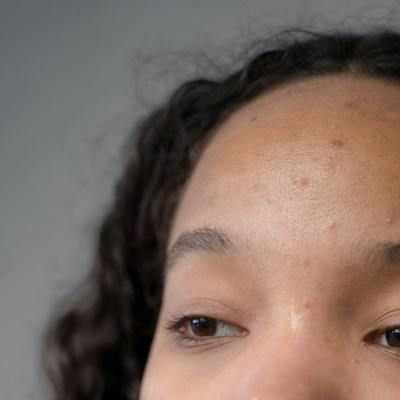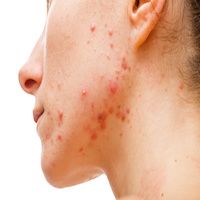Article
Acne Vulgaris Conditions Improved with Salicylic Acid, Lipohydroxy Acid Skin Treatment
Author(s):
A new study in China showed that a combination of mask and serum containing both salicylic acid and lipohydroxy acid showed improvement in acne.
Hequn (Tracy) Wang, PhD
Credit: Rocketreach.co

Acne conditions improve following the use of a new facial serum and mask combination containing salicylic acid (SA) and lipohydroxy acid (LHA), according to new findings, while still not compromising the safety of users.1
Acne vulgaris’s resulting pigmentary alterations, such as post-inflammatory erythema (PIE) and post-inflammatory hyperpigmentation (PIH), are known as a clinical challenge and affect patients’ quality of life on multiple dimensions, including psychosocial consequences such as anxiety and depression.
Prior studies showed some evidence that LHA formulation led to substantial decreases in both the number and size of microcomedones in acne-prone patients after 2 weeks, and SA was also found to treat acne vulgaris and PIH.2,3
Furthermore, serums containing SA, LHA, diacid, glycolic acid, citric acid and hydroxyethyl piperazine ethyl sulfonic acid (HEPES) were found to improve PIH.4 That is why this study, authored by Hequn (Tracy) Wang, PhD, was conducted.
“Based on the above, this randomized controlled study aimed to evaluate the efficacy and safety of a facial serum and a mask containing multiple components, including SA and LHA, for improving the skin condition and acne management in adult acne in combination with sebum dysregulation,” Wang and colleagues wrote.
Background and Findings
The investigators performed a randomized controlled study in Shanghai, China, in July of 2021, during which they recruited adult participants with inflammatory and non-inflammatory acne lesions and self-assessed sebum dysregulation.
The researchers’ inclusion criteria required study participants to be between 18 and 45 years old and have a minimum of 10 blackheads on their noses, a minimum of 8 non-inflammatory acne spots on participants’ faces, symptoms of PIE and/or PIH that were visible, grade ≥3 pores confirmed by a dermatologist that were visible, and the ability to go along with the study’s protocol.
Over the course of the 8-week study period, study participants were randomly assigned by the investigators to receive either the study serum/mask combination or simply the serum alone in a 1:1 ratio. The participants’ skin was assessed at several intervals, including T0d, T1d, T7d, T14d, T28d, and T56d.
During the interval checkups, the researchers evaluated the following elements:
- acne severity
- Comedones
- papules, pustules
- PIE/PIH
- skin pores/skin tone evenness
- sebum secretion
- skin hydration
- trans-epidermal water loss
In the end, the investigators had 83 participants included in their study, all of whom were divided into 2 arms: serum/mask combination and serum-only, with 41 and 42 participants in each group, respectively.
They reported that both groups showed significant improvements in different skin conditions, including ones like acne severity, skin tone evenness, skin pore density, PIE and PIH foci, sebum secretion, closed and open comedones, and skin hydration (all P < 0.05).
The investigators also noted that the addition of the mask to the treatment ended up leading to more substantial improvements in closed comedones and acne severity compared to those given the serum alone (P = 0.022 and P = 0.026, respectively), and there were no adverse reactions reported in either arm.
“Addition of the mask further improved closed comedones, skin tone evenness and acne severity, and accelerated the therapeutic effects without compromising safety,” they wrote. “According to the participant-reported outcomes, both study products were comfortable for daily use.”
References
- Li, S, He, X, Zhang, Z, et al. Efficacy and safety of a facial serum and a mask containing salicylic acid and lipohydroxy acid in acne management: A randomized controlled trial. J Cosmet Dermatol. 2023; 00: 1- 10. doi:10.1111/jocd.15746.
- Uhoda E, Piérard-Franchimont C, Piérard GE. Comedolysis by a lipohydroxyacid formulation in acne-prone subjects. Eur J Dermatol. 2003;13(1):65-68.
- How KN, Lim PY, Wan Ahmad Kammal WSL, Shamsudin N. Efficacy and safety of Jessner's solution peel in comparison with salicylic acid 30% peel in the management of patients with acne vulgaris and postacne hyperpigmentation with skin of color: a randomized, double-blinded, split-face, controlled trial. Int J Dermatol. 2020;59(7):804-812.
- Campos V, Pitassi L, Kalil C, Gonçalves Júnior JE, Sant'Anna B, Correia P. Clinical evaluation of the efficacy of a facial serum containing dioic acid, glycolic acid, salicylic acid, LHA, citric acid, and HEPES in treating post-inflammatory hyperchromia and controlling oily skin in patients with acne vulgaris. J Cosmet Dermatol. 2021;20(6):1766-1773.



